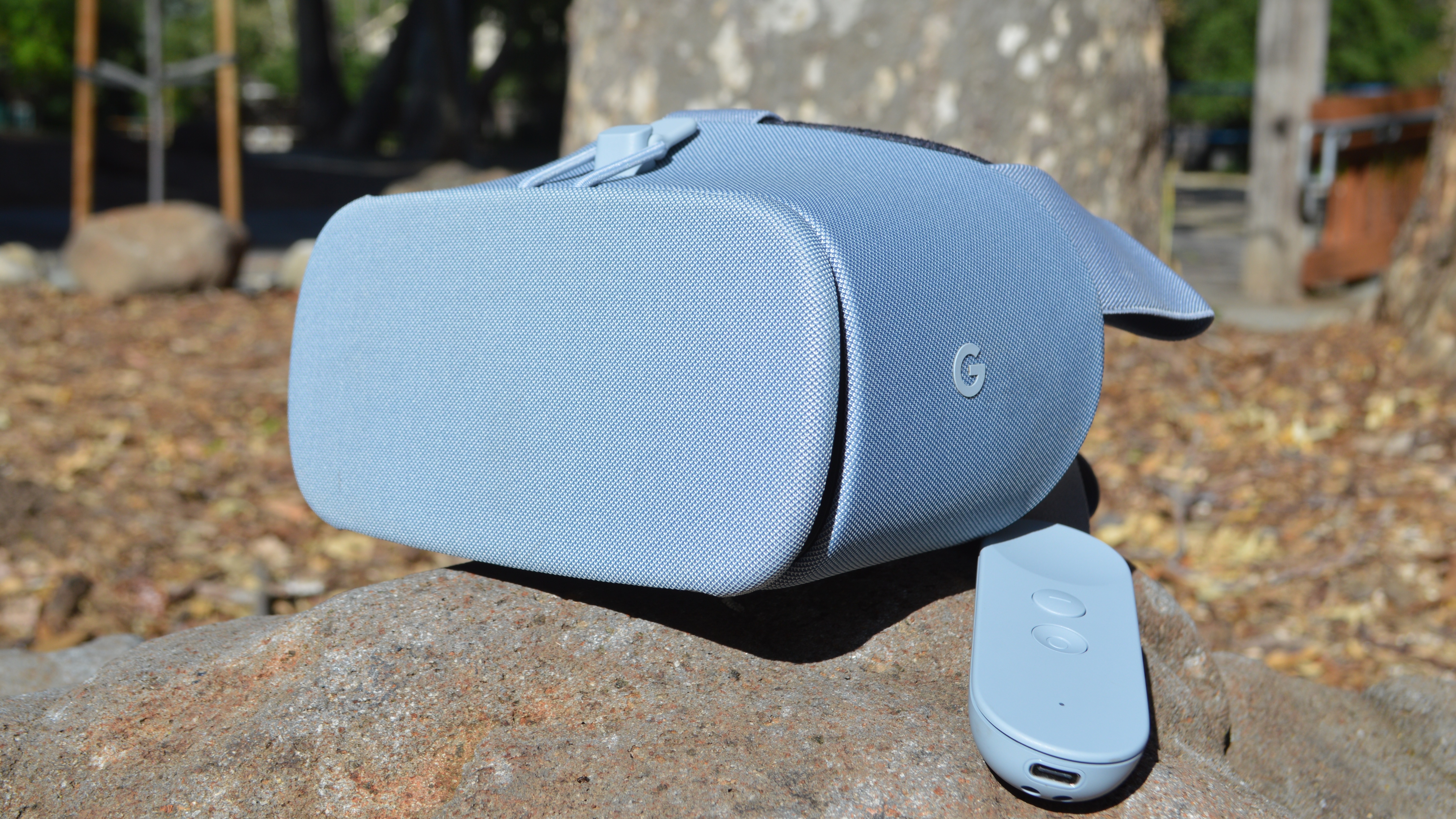
Authors: JordanUpdate: Standalone virtual reality has finally come to the Daydream platform.
This is thanks to the Lenovo Mirage Solo headset, which is on sale today.The headset works much like your standard Android phone, though of course, once you slip it on, you're transported to a world of VR.
The headset features impressive WorldSense tracking, so it will track your head in the real world as it relates to the virtual one.The Daydream platform itself is still limited in terms of apps and games available, and at $399, the Lenovo Mirage Solo is an expensive piece of hardware.
However, it's very comfortable and easy to set up, making it a solid new entry into the VR headset space.Original article continues belowDaydream is Google's platform for bringing virtual reality (VR) to mobile devices and standalone VR headsets, and it's quite different than Google Cardboard, to say the least.Unlike Cardboard, which aimed to get people in the VR door with a low cost and lenient power requirements, Daydream is a more robust vision that has its sight set on providing higher-quality experiences to Android Oreo users and beyond.But it goes beyond Google's own hardware and software.
Google has teamed up with partners to create Daydream headsets, namely Lenovo and the just-launched Lenovo Mirage Solo headset.Google Daydream is all about bringing exciting and absorbing VR experiences to those who don't want to invest in a pricey HTC Vive or Oculus Rift VR headset (though the Lenovo Mirage Solo costs just as much as Oculus Rift).
Here's everything you need to know about it.Cut to the chaseWhat is it Google's high-quality VR platformWhen is it out NowWhat will it cost $99 / 99 (around AU$125) for Daydream View, though standalone headsets are more expensiveGoogle Daydream View headsetWant to get started with Daydream Google has its own headset that you'll be able to use with Daydream-ready phones.It's called Google Daydream View (2017) and, unlike other VR headsets we've seen before, it has a material design just like the Android operating system.
There's a latch on the front to slide your phone in and the controller for the headset is included.Google Daydream View (2017)Last year, Google invited other device makers to create their own Daydream headsets.
At Google IO 2017, it was made obvious that said device makers responded, with dedicated, standalone Daydream headsets in works, though one prominent maker eventually dropped out.Netflix, HBO and Hulu all have Daydream-ready apps available now, plus The New York Times has launched an app, too, for its VR videos.Plus, Google has also made its own apps compatible with the Daydream platform.
That includes Play Movies, Photos, Maps and YouTube.Daydream goes independentDuring Google IO 2017, the firm officially confirmed the well-reported rumor that it would be launching standalone Daydream headsets with select hardware partners.This means that all of the parts needed to drive the Daydream experience will be found inside these headsets.
No need for a phone, PC or even any cables.Those early partners included Qualcomm, with which Google built a reference design, HTC and Lenovo.However, HTC eventually dropped out of making a standalone Daydream headset, opting instead to focus on its own standalone VR headset, the HTC Vive Focus.That headset is launching worldwide later this year.The standout feature of the Lenovo Mirage Solo is Google's new WorldSense tracking technology, a series of sensors that provide all of the motion tracking and sense of presence that, say, a smartphone's sensor array would.As Daydream is deeply integrated into Android, Google has put the entire Play Store within view while wearing a Daydream headset.The Google Play Store takes on a familiar look in the VR space, with each individual app having its own rating and description.
Google has also added the level of motion that you'll experience within each app, just so that you know what sort of immersion you're about to get yourself into.PerformanceDaydream requires these three pillars in order to be a viable VR option: smartphones that are optimized for VR, with a high quality system on chip (SoC) to maintain 60 frames-per-second playback, low persistence displays to eliminate ghosting and lag, and finally, top-notch sensors that operates with minimal latency to boost the sense of presence.So, what sort of performance can we reasonably expect out of it Well, you'd be right to think that it really depends on the power of the phone that's inside.Google's new Pixel 2 and Pixel 2 XL phones pack a Qualcomm Snapdragon 835 processor and 4GB of RAM.
You can bet that these devices are primed to push high-quality VR experiences.What's more, the Lenovo Mirage Solo also packs a Snapdragon 835 chipset and 4GB of RAM.ejr4DNuaxRghqRKvoyZXc3.jpg#

 6
6






